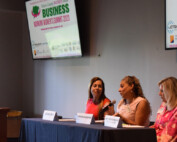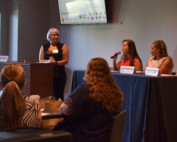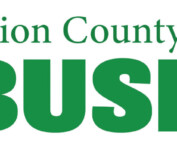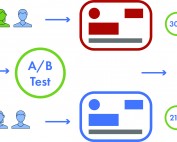The original draft of this article intended to explain why quality Facebook posts is better than the quantity – or frequency – of posting. It’s a surprisingly debated topic within agencies developing social media strategies, and we anticipated joining the choir of those singing in the name of quality.
But in our own research – analyzing years of trends and patterns from our own clients’ Facebooks (specifically our municipal and non-profit organizations) – we realized that although we always strive to deliver a Facebook strategy rooted in quality, the amount our clients post to Facebook brings its own benefits. Quantity matters.
In this article, we will use three (3) current Direct Development clients, all municipalities, to demonstrate how quality and quantity can work effectively together to build a social media strategy.
- Client #1 is a sub-10,000 resident borough whose residents are very tuned in to their local government
- Client #2 is an expanding town of nearly 20,000 younger, more diverse residents, and
- Client #3 is home to nearly 40,000 very diverse residents in the suburbs of a metropolis
If you are a municipality, whatever your size, the distinction between quality and quantity is not as exclusive as you may have thought.
Why Quality Matters
The quality of your Facebook content includes your actual posts, advertisements, interactions, and products or services (as well as important profile information such as a detailed “About” page and a calendar full of helpful resources). Quality also refers to when you post and how you engage with your audience.
Posts that include paragraphs of text simply aren’t engaging, even when tied with a graphic or linked to an article. Graphics that don’t clearly share your message can ultimately work against you.
That’s why, when it comes to quality, less can be more. A full, comprehensive profile makes all the difference. Posts and advertisements that are visually engaging grab your audience’s attention. Once you have that attention, a clear message with concise language will keep it..
Year over year, Client #3’s frequency of Facebook posting remained concurrent with 2019’s performance. However, we dramatically decreased Published Text posts by 75%, while increasing Photo and Video posts. Interactive posts are quality posts; anything that is visually engaging or requires the reader to interact (Click, Like, Comment, Share). How did this approach pan out?
| Facebook Metric | 2019 | 2020 | Growth (%) |
| Posts | 273 | 290 | +6% |
| Impressions | 372,693 | 645,035 | +73% |
| Engagements | 10,594 | 23,159 | +119% |
| Followers | 1,461 | 1,687 | +15% |
As you can see, Client #3’s posting (and even their Follower rate) did not increase by large metrics. Direct Development didn’t grow the client’s audience; rather, we provided more engaging, interactive, quality content. With the same followers and the same amount of posting, we increased this municipality’s Facebook Impressions by 73% and their Engagements by nearly 120% year-over-year.
Why Quantity Matters
During the COVID-19 pandemic, Direct Development and our clients rebuilt our social media strategies from the ground up. Starting with Client #1, we provided identical updates across all platforms; whatever was shared on Facebook was shared in a daily email newsletter and on the client’s website, and vice versa. We were posting to their Facebook multiple times each day, providing new information as it came in.
The same is true for both clients #2 and #3, but the reason I cite #1 is their devoted audience. Residents truly appreciated the consistent updates provided by their town, leaving comments on Facebook and in email.
Situations like this are where quantity matters. Impressions on social media remained steady throughout the year and in line with their YoY trend which anchored a deliberate 20% decrease in published text posts. Replacing traditional text-only posts with videos, images, and links, our client realized a 30% increase in Engagements over 2019 performance and 20% growth in Followers.
Last year, ahead of COVID-19, Direct Development rolled out new branding guidelines for Client #2, including the introduction of an Instagram profile. For the purposes of this article, I’m mentioning Instagram because it has influenced our approach to Facebook as we provided critical updates in new ways. This includes formal press releases; rather than simply copying and pasting the text into a Facebook post, our design team developed press release templates for engaging graphic images on social platforms – e, refreshing a tired approach to standard announcements.
In this approach, we significantly increased our posting over 2019. There was, of course, a lot to post about: COVID, the Census, and the 2020 election. But, most or all of the events, activities, programs, and information that would typically be shared (and was in 2019) had to be cancelled. We relied entirely on information sharing, and these are the results.
| Facebook Metric | 2019 | 2020 | Growth (%) |
| Posts | 399 | 1,739 | +336% |
| Impressions | 807,405 | 2,300,671 | +185% |
| Engagements | 58,332 | 188,954 | +224% |
| Post Link Clicks | 6,560 | 16,021 | +144% |
| Followers | 5,023 | 6,280 | +25% |
By leveraging the COVID-19 pandemic, 2020 election, and the Census to increase our online presence, our municipal clients became de facto sources of information for their target audiences, alongside the New Jersey’s state government. Residents looked to them for local information, helpful resources, and important updates. Quantity matters –but when?
It would seem, quantity matters when your audience has very few other sources to turn to.
Based on the performance trends of these three very different municipalities, we’ve concluded that both quality and quantity must have a place in any client’s Facebook strategy. We cannot post so frequently as to annoy our audience, but we have to post frequently enough that our audience remembers we exist. We have to post with quality in mind when trying to maintain our audience’s attention; but focusing on quantity can establish you as a trusted source of information within your community when attention is already heightened.









